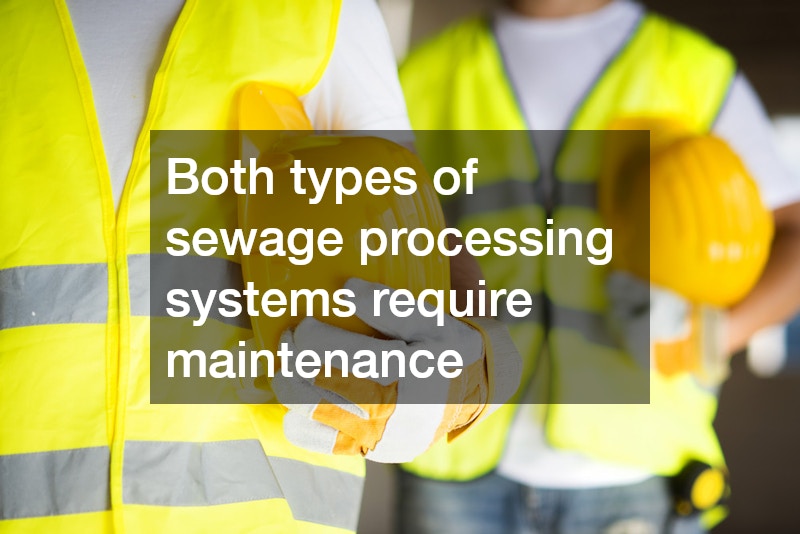
When you purchase property in a rural area, you may discover that the region lacks a community sewer system. In these cases, many homeowners turn to septic tanks as a sewage solution. A few property owners choose composting toilets instead, the top solution among the alternatives to septic.
Septic or Composting?
Would a septic tank or composting toilet better serve you? A septic tank can service more than one toilet, making it the best choice for a home with more than one bathroom. A composting toilet serves the bathroom in which you install it.
Septic and Composting Designs
The best septic tank design for your home depends on its construction style and the topography of your yard. Commonly, you bury a septic tank, so you’ll need to live in an area where the ground allows this. Choose from heavy-duty plastic, stone, or stainless steel. Expect to pay between $1,100 and $2,000 for a 500-gallon tank. Similarly, a composting toilet comes crafted from heavy-duty plastic and costs between $1,100 and $2,000 for an automated system. A manual system that requires emptying the compost tank once weekly costs between $150 and $300.
Maintenance
Both types of sewage processing systems require maintenance. You’ll need to hire a septic tank service to pump the septic tank once per year, which costs between $300 and $700. Pumping and cleaning costs a little more—between $500 and $1,000. You’ll also need to dump chemicals into the tank as a part of monthly septic treatment. An automated composting toilet requires an annual maintenance visit, while a manual composting toilet the homeowner empties once per week. There’s no annual maintenance fee, but if it breaks, you’ll have a tougher time finding a plumber who knows how to fix it.

With as important as plumbing is to people’s everyday lives, it shouldn’t be surprising that it has been around for quite a long time. Historians have traced standardized plumbing back to about 3,000 B.C. This is when the Indus River Valley civilization relied upon earthen plumbing pipes, which provided transportable water and drain wastes. In this day and age, most Americans have gotten used to modern, up to date plumbing. However, there are still a couple of different types of plumbing that they might encounter. The first one is reliant upon septic tanks for sewage disposal. The other involves using sewer lines, which transport waste to municipal water treatment plants Should you have a septic tank on your property, you may find that there are a number of issues that can occur — a septic tank repair is unfortunately something that a lot of homeowners with this waste disposal system may have to deal with. With that being said, let’s look into what causes the needs for septic tank repairs, as well as the advantages of alternatives like trenchless sewer lines.
Septic Tanks Versus Sewer Lines: The Core Differences
It’s estimated that about 20% of American homes have septic tanks, while the remaining 80% are on sewer lines. If you’re shopping for a home, it’s important to take these differences into account when making a final decision. Sometimes, the reason why homes have septic tanks is that they physically cannot be connected to sewer lines — in that case, the area in which you’re looking for a home may very well be too far away from the sewer lines for there to be homes that don’t have septic tanks. Other homes may have septic tanks because they are older. As previously mentioned, a septic tank takes waste to a holding tank, while a sewer line will take it to a treatment plant. A septic tank will rely upon bacteria to break down the waste, and it will then be released into a drainfield. A sewer lining system will require that the homeonwers either pay for water and sewage, or a combination of the two — while a septic tank’s cost is included in the cost of the home. The great thing about a sewer line system is that it’s out of the homeowner’s hands, while a septic tank must be cared for by the homeowner. This can make the sewer system more convenient, while the septic tank may have fewer upfront costs, but things like septic tank repairs are up to you after you buy.
Septic Tank Repairs: What To Expect
The upkeep required of septic tanks is difficult to ignore. As with any stagnant product, a septic tank does degrade over time, and has a finite lifetime. A typical septic system will have a lifetime of about 25 years, but the overall design of the septic system can affect that lifetime. If a septic system fails, it will be noticeable quite quickly; septic tanks can become clogged by items that shouldn’t have been flushed, like tampons. The filter can become clogged as well, and the piping can become an issue as it can with any other plumbing system. However, sewer lines can develop issues as well. This is one reason why many people turn towards trenchless sewer linings.
Trenchless Sewer Linings: The Alternative
Trenchless sewer linings are excellent alternatives for those that are trying to install new sewer lines or replace damaged ones without excessively digging up their properties. These lines use cured in place pipe, or CIPP, solutions. It takes just a few hours to complete these applications, and large-scale digging is not necessary. Though you don’t have to worry about the digging, you’ll still get the results you want — with the same levels of durability found in traditional lining. Furthermore, the lack of extraneous costs means that these linings usually cost less as well!
Ultimately, the choice is up to you — pick the right home for your needs, but keep the plumbing situation in mind!

